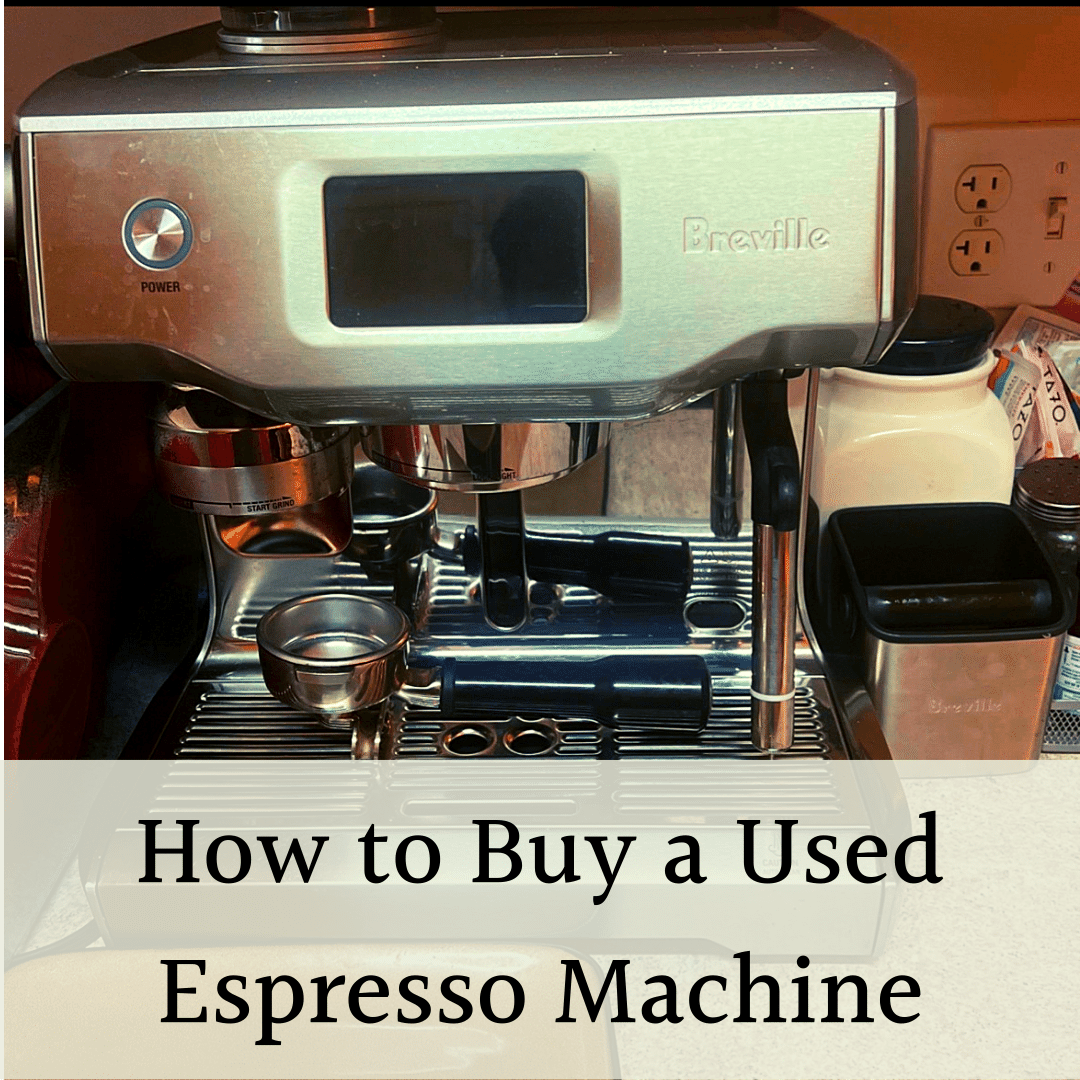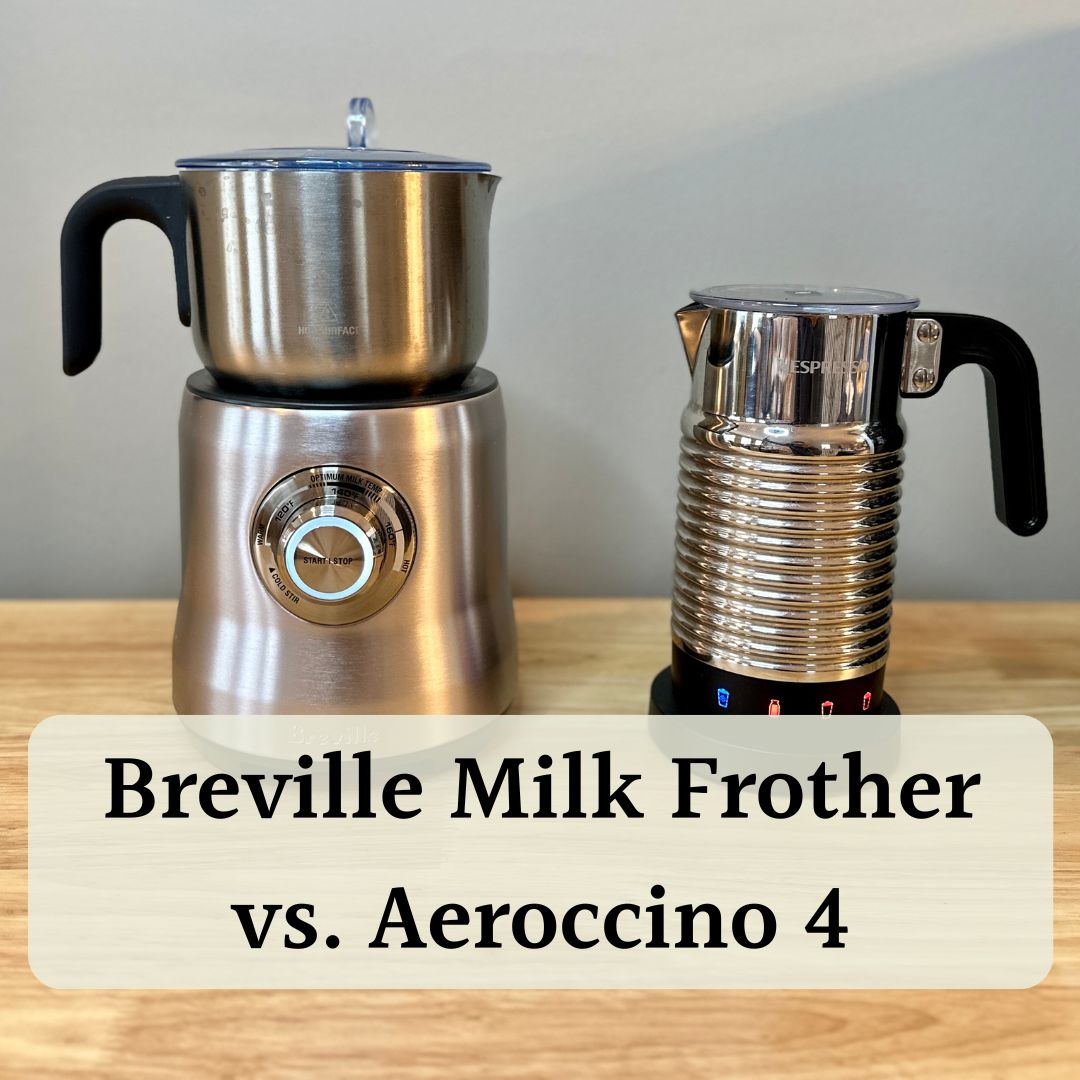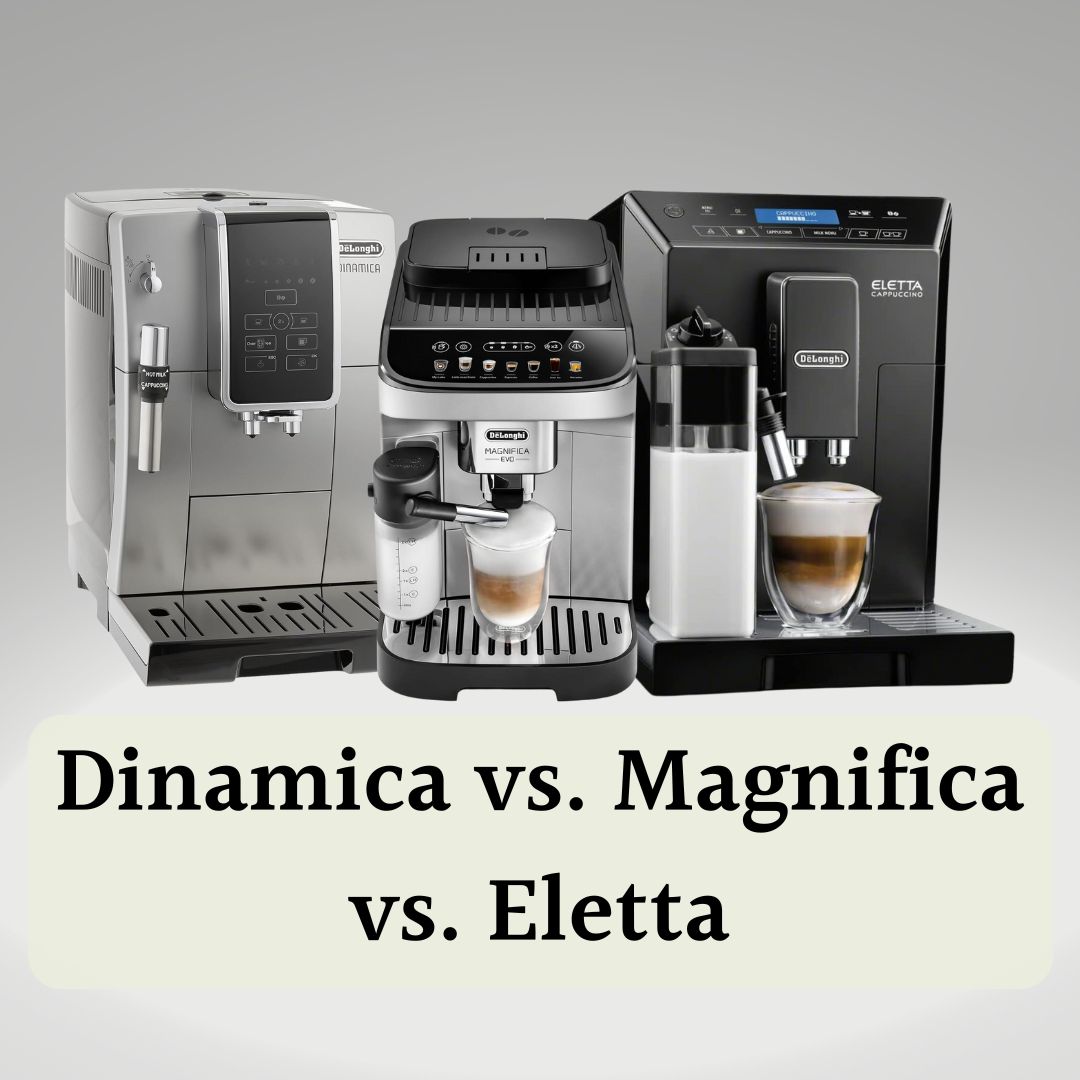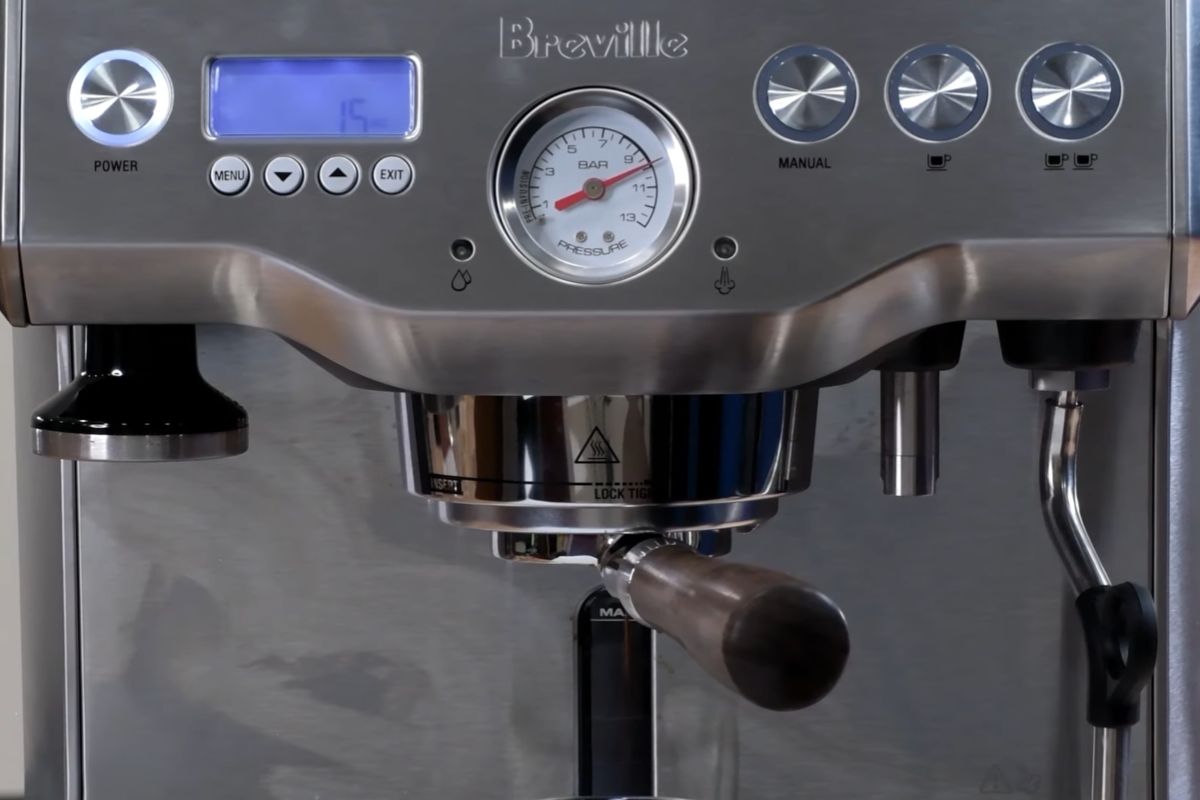
Pressure is what makes espresso what it is. Without pressure forcing water through the grounds, it might as well be a really small pour-over. Why is pressure so fundamental to brewing espresso, and what are the ideal bars of pressure for espresso brewing?
Under the right circumstances (9 bar of pressure), pressure creates an ideal water flow rate through an espresso puck. This, in turn, leads to even extraction of the rich flavors locked in the espresso grounds. But do you always need 9 bars? What about 15-bar machines?
I’ll explore why 9 bar is the industry standard pressure rating. I’ll also explain how differences in pressure affect the final flavor of your shot.
Understanding Bars of Pressure
Espresso is a brew method that uses pressure to force water through a coffee puck. When discussing espresso machines, a “bar” is a unit of pressure measurement. One bar is about equal to the atmospheric pressure at sea level. If you walk outside while at or near sea level, your body is experiencing one bar of pressure.
The standard pressure for espresso machines is nine bars of pressure. To put that in context, one bar is equal to 14.5 pounds per square inch (PSI). This means that every square inch of surface area that the pressure is being applied to is experiencing 14.5 pounds of force. If the surface area increases and the pressure stays the same, the total force also increases.
A standard 58mm portafilter has just over four square inches of surface area. And using our conversion of bars to PSI, nine bars is equal to 130.5 pounds of force. That means your espresso machine exerts over 530 pounds (240 kilograms) of force on the puck.
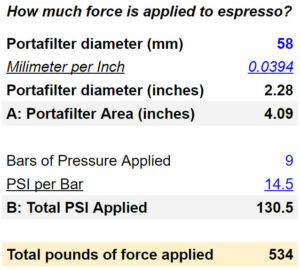
How Does Pressure Affect Espresso Quality?
Pressure’s biggest impact on brewing espresso is on flow rate, which directly affects your total contact time. Contact time affects extraction, and extraction is our main measure of flavor.
Good espresso is about finding the optimal pressure to get the right flow rate and extraction. After empirical testing, nine bars is simply the right level.
I’ve tested this with the Breville espresso machines, finding the Breville Barista Express runs at 14-15 bars, while the Barista Express Impress flows at nine bars. The newer Impress model tastes much better.
What’s interesting is higher pressure actually reduces the flow rate. While you think more pressure would cause espresso to flow faster, this isn’t the case.
I modified my Barista Express and high pressure caused faster flow at coarse grind size, but slower flow at fine grind sizes.
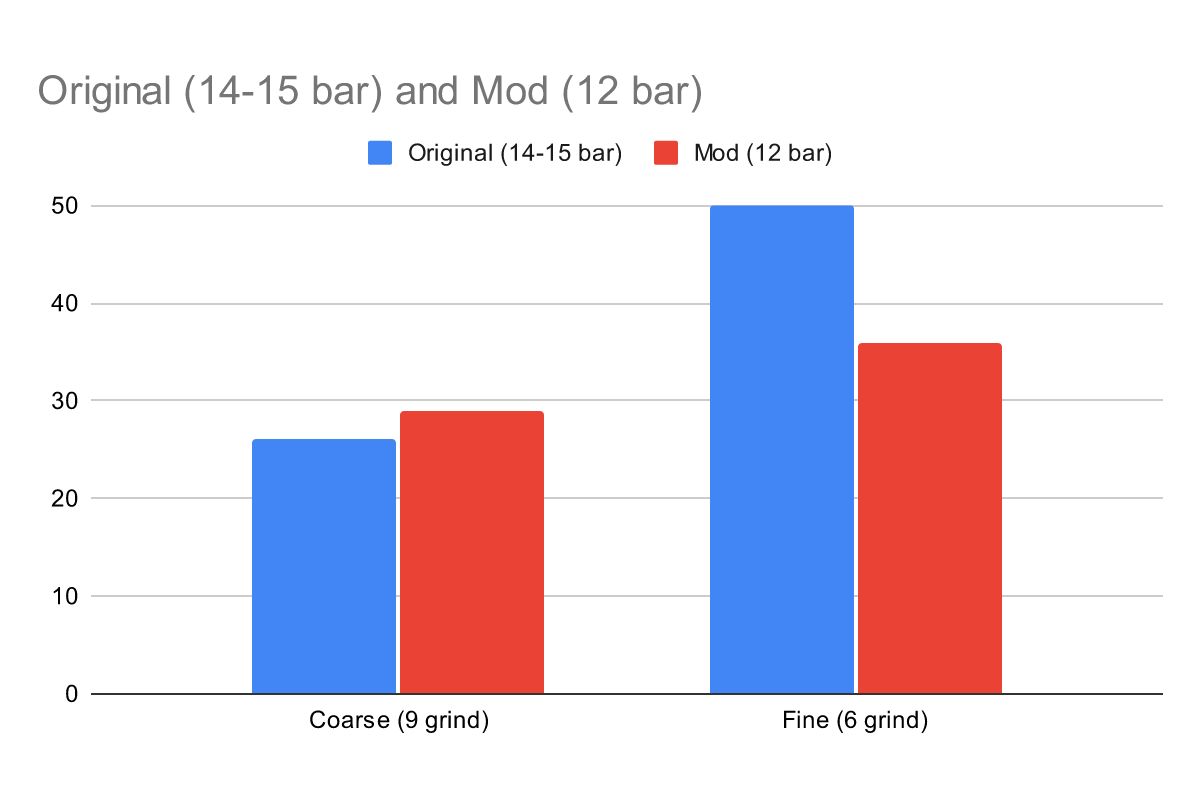
The reason for this counterintuitive result is the coffee releases trapped CO2 gas as it comes in contact with water. More bars of pressure cause that gas faster and with more force. As CO2 releases, it creates resistance to the water and “clogs” the puck. Fewer bars of pressure moderate the release of gas. This reduces resistance and increases the flow rate.
I noticed the same change when modifying my Gaggia Classic Pro from 12 bars to nine bars of pressure.
In both cases, reducing the pressure closer to 9-12 bars improved the flavor profile. Also, the espresso machines were easier to use, as the flow was more consistent at differing grind sizes. This made it much easier to dial in coffee.
However, using less than nine bars of pressure doesn’t have as much effect on espresso flavor. It reduces the flow rate, usually increasing brew time and causing over-extraction.
Seven Miles Roasters have a good analysis on pressure:
This testing is empirical, but it says there’s a reason we all use nine bars as the standard. It produces Knowing how much pressure to exert during espresso brewing can be the difference between a great-tasting espresso and a muddy, underdeveloped shot.
How Many Bars Of Pressure Should An Espresso Machine Have?
9-bar versus 15-bar
However, you’ll notice many espresso machines advertise higher pressure, often 15 bar or even 20 bars of pressure. Which one is best?
This labeling is misleading because the pressure is measured in two places: pump and brew head pressure.
Pump pressure is the pressure generated by the espresso machine’s pump (go figure). Most of the time, if a machine says it’s producing more than 9 bar (15 bar, for instance), it’s referring to pump pressure. Don’t let this high number fool you. The pump pressure doesn’t always translate into brew head pressure.
The brew head (or group head) is where the coffee grounds and water meet during extraction. The brew head pressure is different than the pump pressure, and it is what actually matters.
Instead, most espresso machines are equipped with an Over-Pressure Valve (OPV) or a pressure regulator. These devices moderate incoming pump pressure. That ensures the pressure at the group head remains within the manufacturer’s recommended range. So, the 15-bar pump pressure is usually regulated between 8.5 to 9.5 bar, but that can be changed.
So, why do espresso machines have pumps that can reach 15 bar if the ideal brew head pressure is around 9 bar?
Water loses pressure as it travels from the pump to the group head. If the pump pressure were 9 bar, then by the time the water got to the puck, the pressure would be well beneath the ideal range. The higher pump pressure provides the necessary force to push water through the espresso machine while maintaining enough pressure to brew good espresso. Having higher pressure (like 15 bar) ensures there’s never a shortage of pressure at the group head.
The OPV produces the exact pressure necessary for even extraction, but it can only lower pressure, not increase it. Higher pressure at the pump allows the OPV to deliver the same pressure at the group head every single time. This ensures the greatest pressure consistency from shot to shot.
So, while you may see espresso machines with pump pressures of 15 bar, don’t be alarmed. The critical factor is the brew head pressure, which should be around 9 bar.
Steam-Generated Machines vs. Pump Machines
Another factor influencing the ideal pressure for your espresso machine is the type of machine you’re using:
Steam-Generated Machines: These machines use steam pressure to force water through the coffee grounds. They’re more affordable compared to other espresso machines but also operate at much lower pressures. They produce 1.5 to 3 bar, which isn’t enough to extract the rich flavors required in espresso or to produce crema.
I don’t recommend using a steam-generated machine for everyday home use. Many steam options on Amazon that use electricity don’t generate enough pressure and made to be affordable.
Some steam machines are great portable options, like the 9Barista and Bellman. These models generate the requisite pressure over any heat source and don’t need electricity. They are great for camping trips. You can argue the moka pot is the original “steam-generated espresso machine” that is great for espresso.
Pump Machines: Pump-driven espresso machines have been around since 1938. They’re the most common choice for serious espresso enthusiasts and professionals. These machines use an electric pump to create the necessary pressure, typically within the 9 to 15-bar range. They offer more control and consistency and the necessary pressure to extract all the best flavors and produce an ideal crema.
There are also manual espresso machines where you generate the pressure with your arm and a series of springs and levers. You can get up to 9 bar of pressure on these machines, so they’re an affordable, portable alternative to pump machines.
Pressure Profiling and Pre-Infusion
Let’s touch on a more advanced technique – pressure profiling and pre-infusion.
Pre-infusion is when a small amount of water is applied to the coffee grounds at a lower pressure before the full pressure is engaged. This helps saturate the grounds evenly and prepare them for the main extraction by letting them release carbon dioxide. It’s kind of like the espresso version of the pour-over “bloom.” Overall, pre-infusion leads to a more even extraction and enhanced flavor clarity, and I strongly encourage using it to improve espresso.
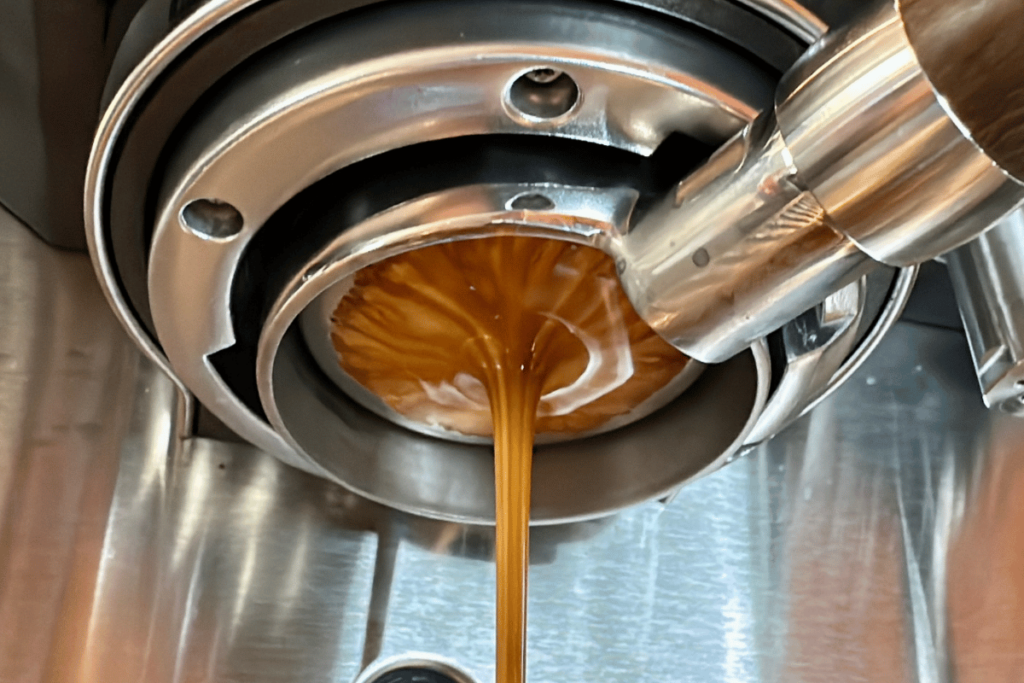
Most espresso machines have some form of pre-infusion, whether it is automatic, manual, or programmable. Manual pre-infusion is only possible on machines that allow you full control over brewing pressure. Automatic machines with buttons for brewing often have a programmed pre-infusion.
Pressure profiling is where you alter the pressure through the brewing process to produce the ideal extraction. By starting with a lower pressure during pre-infusion and increasing it during brewing, you can coax out unique flavors from your coffee.
Pre-infusion is an example of pressure profiling. Like with pre-infusion, some machines will let you do this manually. Others can be programmed to adjust the pressure automatically during brewing.
These techniques are more advanced than many beginners are comfortable with. I highly recommend learning and testing different pre-infusion times, as it’s an easy way to improve espresso on most machines.
However, pressure profiling requires an advanced espresso machine. It needs precise controls that often cost thousands of dollars, not to mention the expertise to create a proper profile. But, they allow you to tailor the extraction process to specific coffee beans, roast levels, and taste preferences.
Exploring the Science of Coffee
To dive more into how different variables affect coffee quality, read our article on the ideal coffee temperature.

